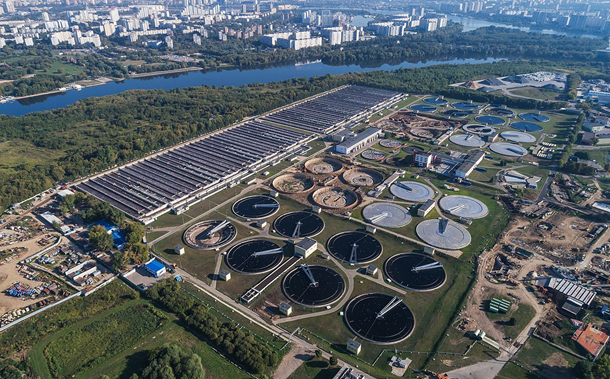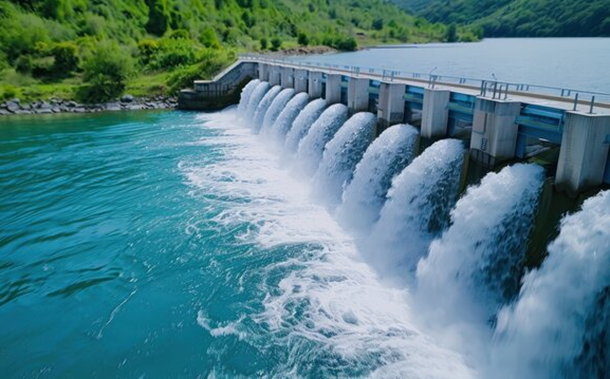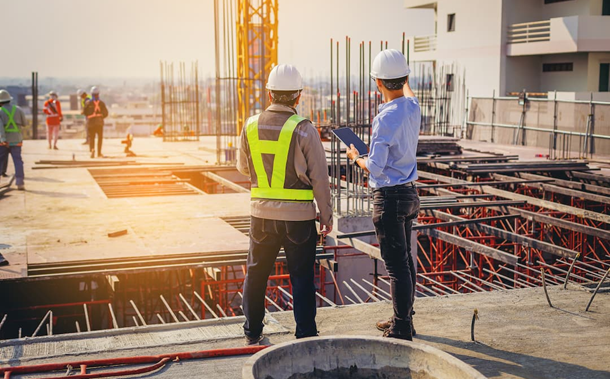Evaluation of Alkali-Activated Mortar Incorporating Combined and Uncombined Fly Ash and GGBS Enhanced with Nano Alumina
Downloads
Doi:10.28991/CEJ-2024-010-03-016
Full Text:PDF
Downloads
[2] Malhotra, V. M., & Mehta, P. K. (2008). High performance, high-volume fly ash concrete for building sustainable and durable structure (3rd Ed.). American Coal Ash Association (ACAA) Publication, Denver, United Sattes.
[3] Davidovits, J. (1991). Geopolymers - Inorganic polymeric new materials. Journal of Thermal Analysis, 37(8), 1633–1656. doi:10.1007/BF01912193.
[4] Gharzouni, A., Samet, B., Baklouti, S., Joussein, E., & Rossignol, S. (2016). Addition of low reactive clay into metakaolin-based geopolymer formulation: Synthesis, existence domains and properties. Powder Technology, 288, 212–220. doi:10.1016/j.powtec.2015.11.012.
[5] Davidovit, J. (2008). Geopolymer Chemistry and Applications (5th Ed.). Geopolymer Institute, Saint-Quentin, France.
[6] Singh, B., Ishwarya, G., Gupta, M., & Bhattacharyya, S. K. (2015). Geopolymer concrete: A review of some recent developments. Construction and Building Materials, 85, 78–90. doi:10.1016/j.conbuildmat.2015.03.036.
[7] Khale, D., & Chaudhary, R. (2007). Mechanism of geopolymerization and factors influencing its development: A review. Journal of Materials Science, 42(3), 729–746. doi:10.1007/s10853-006-0401-4.
[8] Hardjito, D., Wallah, S. E., Sumajouw, D. M. J., & Rangan, B. V. (2004). On the development of fly ash-based geopolymer concrete. ACI Materials Journal, 101(6), 467–472. doi:10.14359/13485.
[9] Reddy, M. S., Dinakar, P., & Rao, B. H. (2016). A review of the influence of source material's oxide composition on the compressive strength of geopolymer concrete. Microporous and Mesoporous Materials, 234, 12–23. doi:10.1016/j.micromeso.2016.07.005.
[10] Naik, T. R. (2007). Sustainability of the cement and concrete industries. Proceedings of the International Conference on Achieving Sustainability in Construction, 19–25, doi:10.1680/asic.34044.0017.
[11] Kubba, Z., Fahim Huseien, G., Sam, A. R. M., Shah, K. W., Asaad, M. A., Ismail, M., Tahir, M. M., & Mirza, J. (2018). Impact of curing temperatures and alkaline activators on compressive strength and porosity of ternary blended geopolymer mortars. Case Studies in Construction Materials, 9, 205. doi:10.1016/j.cscm.2018.e00205.
[12] Sumesh, M., Alengaram, U. J., Jumaat, M. Z., Mo, K. H., & Alnahhal, M. F. (2017). Incorporation of nano-materials in cement composite and geopolymer based paste and mortar – A review. Construction and Building Materials, 148, 62–84. doi:10.1016/j.conbuildmat.2017.04.206.
[13] Görhan, G., Aslaner, R., & Šžinik, O. (2016). The effect of curing on the properties of metakaolin and fly ash-based geopolymer paste. Composites Part B: Engineering, 97, 329–335. doi:10.1016/j.compositesb.2016.05.019.
[14] Çevik, A., Alzeebaree, R., Humur, G., Niş, A., & Gülşan, M. E. (2018). Effect of nano-silica on the chemical durability and mechanical performance of fly ash based geopolymer concrete. Ceramics International, 44(11), 12253–12264. doi:10.1016/j.ceramint.2018.04.009.
[15] Qing, Y., Zenan, Z., Deyu, K., & Rongshen, C. (2007). Influence of nano-SiO2 addition on properties of hardened cement paste as compared with silica fume. Construction and Building Materials, 21(3), 539–545. doi:10.1016/j.conbuildmat.2005.09.001.
[16] Li, H., Xiao, H. G., Yuan, J., & Ou, J. (2004). Microstructure of cement mortar with nano-particles. Composites Part B: Engineering, 35(2), 185–189. doi:10.1016/S1359-8368(03)00052-0.
[17] Sobolev, K., Flores, I., Hermosillo, R., & Torres-Martínez, L. M. (2006). Nanomaterials and nanotechnology for high-performance cement composites. Proceedings of ACI session on nanotechnology of concrete: recent developments and future perspectives, 7 November, 2006, United States.
[18] Quercia, G., & Brouwers, H. J. H. (2010). Application of nano-silica (nS) in concrete mixtures. 8th fib Ph.D. Symposium in KGS, 20-23 June, 2010, Lyngby, Denmark.
[19] Belkowitz, J., & Armentrout, D. L. (2009). The investigation of nano silica in the cement hydration process. Master Thesis, University of Denver, Colorado, United States.
[20] Alzeebaree, R., Çevik, A., Mohammedameen, A., Niş, A., & Gülşan, M. E. (2020). Mechanical performance of FRP-confined geopolymer concrete under seawater attack. Advances in Structural Engineering, 23(6), 1055–1073. doi:10.1177/1369433219886964.
[21] Alzeebaree, R., Gülsan, M. E., Nis, A., Mohammedameen, A., & Cevik, A. (2018). Performance of FRP confined and unconfined geopolymer concrete exposed to sulfate attacks. Steel and Composite Structures, 29(2), 201–218. doi:10.12989/scs.2018.29.2.201.
[22] Phoo-ngernkham, T., Chindaprasirt, P., Sata, V., Hanjitsuwan, S., & Hatanaka, S. (2014). The effect of adding nano-SiO2 and nano-Al2O3 on properties of high calcium fly ash geopolymer cured at ambient temperature. Materials and Design, 55, 58–65. doi:10.1016/j.matdes.2013.09.049.
[23] Xavier, C. S. B., & Rahim, A. (2022). Nano aluminium oxide geopolymer concrete: An experimental study. Materials Today: Proceedings, 56, 1643–1647. doi:10.1016/j.matpr.2021.10.070.
[24] Puligilla, S., & Mondal, P. (2013). Role of slag in microstructural development and hardening of fly ash-slag geopolymer. Cement and Concrete Research, 43(1), 70–80. doi:10.1016/j.cemconres.2012.10.004.
[25] Central Electrical Authority (CEA). (2015). Report on fly ash generation at coal/lignite based thermal power stations and its utilization in the country for the year 2014-2015. Central Electricity Authority (CEA), New Delhi, India.
[26] Adak, D., Sarkar, M., & Mandal, S. (2014). Effect of nano-silica on strength and durability of fly ash based geopolymer mortar. Construction and Building Materials, 70, 453–459. doi:10.1016/j.conbuildmat.2014.07.093.
[27] Okoye, F. N., Durgaprasad, J., & Singh, N. B. (2016). Effect of silica fume on the mechanical properties of fly ash based-geopolymer concrete. Ceramics International, 42(2), 3000-3006. doi:10.1016/j.ceramint.2015.10.084.
[28] Duxson, P., Fernández-Jiménez, A., Provis, J. L., Lukey, G. C., Palomo, A., & van Deventer, J. S. (2007). Geopolymer technology: the current state of the art. Journal of materials science, 42, 2917-2933. doi:10.1007/s10853-006-0637-z.
[29] Ning, Y., Fielding, L. A., Nutter, J., Kulak, A. N., Meldrum, F. C., & Armes, S. P. (2019). Spatially Controlled Occlusion of Polymer-Stabilized Gold Nanoparticles within ZnO. Angewandte Chemie - International Edition, 58(13), 4302–4307. doi:10.1002/anie.201814492.
[30] Lee, W. H., Wang, J. H., Ding, Y. C., & Cheng, T. W. (2019). A study on the characteristics and microstructures of GGBS/FA based geopolymer paste and concrete. Construction and Building Materials, 211, 807–813. doi:10.1016/j.conbuildmat.2019.03.291.
[31] Chishi, A. K., & Gautam, L. (2023). Sustainable use of silica fume in green cement concrete production: a review. Innovative Infrastructure Solutions, 8(7), 195. doi:10.1007/s41062-023-01164-z.
[32] Khanday, S. A., Hussain, M., & Das, A. K. (2023). Durability of peat stabilized by RHA based geopolymer formed by adding pure alumina and bauxite powder. European Journal of Environmental and Civil Engineering, 27(13), 3812–3833. doi:10.1080/19648189.2022.2154851.
[33] Jethwani, R., Thakur, M. S., & Das Adhikary, S. (2020). Development of Geopolymer Concrete for Sustainable Infrastructures. Advances in Sustainable Construction Materials and Geotechnical Engineering. Lecture Notes in Civil Engineering, 35, Springer, Singapore. doi:10.1007/978-981-13-7480-7_1.
[34] Hassan, A., Arif, M., & Shariq, M. (2019). Use of geopolymer concrete for a cleaner and sustainable environment – A review of mechanical properties and microstructure. Journal of Cleaner Production, 223, 704–728. doi:10.1016/j.jclepro.2019.03.051.
[35] Mallikarjuna Rao, G., & Gunneswara Rao, T. D. (2015). Final Setting Time and Compressive Strength of Fly Ash and GGBS-Based Geopolymer Paste and Mortar. Arabian Journal for Science and Engineering, 40(11), 3067–3074. doi:10.1007/s13369-015-1757-z.
[36] Hua, X., Provis, J. L., Van Deventer, J. S. J., & Krivenko, P. V. (2008). Characterization of Aged Slag Concretes. ACI Materials Journal, 105(2), 131–139. doi:10.14359/19753.
[37] Liu, Z., Takasu, K., Koyamada, H., & Suyama, H. (2022). A study on engineering properties and environmental impact of sustainable concrete with fly ash or GGBS. Construction and Building Materials, 316, 125776. doi:10.1016/j.conbuildmat.2021.125776.
[38] Bilodeau, A., & Mohan Malhotra, V. (2000). High-volume fly ash system: Concrete solution for sustainable development. ACI Structural Journal, 97(1), 41–48. doi:10.14359/804.
[39] Gupta, S., & Chaudhary, S. (2020). Use of fly ash for the development of sustainable construction materials. New Materials in Civil Engineering, 677–689, Butterworth-Heinemann, Oxford, United Kingdom. doi:10.1016/b978-0-12-818961-0.00021-1.
[40] Nayak, D. K., Abhilash, P. P., Singh, R., Kumar, R., & Kumar, V. (2022). Fly ash for sustainable construction: A review of fly ash concrete and its beneficial use case studies. Cleaner Materials, 6, 100143. doi:10.1016/j.clema.2022.100143.
[41] Xu, G., & Shi, X. (2018). Characteristics and applications of fly ash as a sustainable construction material: A state-of-the-art review. Resources, Conservation and Recycling, 136, 95–109. doi:10.1016/j.resconrec.2018.04.010.
[42] Arivalagan, S. (2014). Sustainable studies on concrete with GGBS as a replacement material in cement. Jordan Journal of Civil Engineering, 8(3), 263–270.
[43] Higgins, D. (2007). Briefing: GGBS and sustainability. Proceedings of the Institution of Civil Engineers - Construction Materials, 160(3), 99–101. doi:10.1680/coma.2007.160.3.99.
[44] Saeed, N. M., Omer, B., Jamal, A. S., & Dheyaaldin, M. H. (2023). Performance of cement mortar modified with GGBFS at elevated temperatures with various w/b ratios and superplasticizer dosages. Construction and Building Materials, 368, 130493. doi:10.1016/j.conbuildmat.2023.130493.
[45] Pacheco-Torgal, F., & Jalali, S. (2011). Nanotechnology: Advantages and drawbacks in the field of construction and building materials. Construction and Building Materials, 25(2), 582–590. doi:10.1016/j.conbuildmat.2010.07.009.
[46] Ahmad, J., Kontoleon, K. J., Majdi, A., Naqash, M. T., Deifalla, A. F., Ben Kahla, N., Isleem, H. F., & Qaidi, S. M. A. (2022). A Comprehensive Review on the Ground Granulated Blast Furnace Slag (GGBS) in Concrete Production. Sustainability (Switzerland), 14(14), 8783. doi:10.3390/su14148783.
[47] Yilmazoglu, A., Yildirim, S. T., Behçet, Ö. F., & Yıldız, S. (2022). Performance evaluation of fly ash and ground granulated blast furnace slag-based geopolymer concrete: A comparative study. Structural Concrete, 23(6), 3898–3915. doi:10.1002/suco.202100835.
[48] Mohammed, M., Shafiq, N., Abdallah, N. A. W., Ayoub, M., & Haruna, A. (2020). A review on achieving sustainable construction waste management through application of 3R (reduction, reuse, recycling): A lifecycle approach. IOP Conference Series: Earth and Environmental Science, 476(1). doi:10.1088/1755-1315/476/1/012010.
[49] ASTM C618-22. (2002). Standard Specification for Coal Fly Ash and Raw or Calcined Natural Pozzolan for Use in Concrete. ASTM International, Pennsylvania, United States. doi:10.1520/C0618-22.
[50] Riahi, S., & Nazari, A. (2012). RETRACTED: The effects of nanoparticles on early age compressive strength of ash-based geopolymers. Ceramics International, 38(6), 4467–4476. doi:10.1016/j.ceramint.2012.02.021.
[51] T. O. (2014). Experimental Investigations on Strength, Durability, Sustainability and Economic Characteristics of Geo-Polymer Concrete Blocks. International Journal of Research in Engineering and Technology, 3(6), 115–122. doi:10.15623/ijret.2014.0306021.
[52] Assaedi, H., Shaikh, F. U. A., & Low, I. M. (2017). Effect of nanoclay on durability and mechanical properties of flax fabric reinforced geopolymer composites. Journal of Asian Ceramic Societies, 5(1), 62–70. doi:10.1016/j.jascer.2017.01.003.
[53] Saini, G., & Vattipalli, U. (2020). Assessing properties of alkali activated GGBS based self-compacting geopolymer concrete using nano-silica. Case Studies in Construction Materials, 12, 352. doi:10.1016/j.cscm.2020.e00352.
[54] Singh, B., Rahman, M. R., Paswan, R., & Bhattacharyya, S. K. (2016). Effect of activator concentration on the strength, ITZ and drying shrinkage of fly ash/slag geopolymer concrete. Construction and Building Materials, 118, 171–179. doi:10.1016/j.conbuildmat.2016.05.008.
[55] Alzeebaree, R., Çevik, A., Nematollahi, B., Sanjayan, J., Mohammedameen, A., & Gülşan, M. E. (2019). Mechanical properties and durability of unconfined and confined geopolymer concrete with fiber reinforced polymers exposed to sulfuric acid. Construction and Building Materials, 215, 1015–1032. doi:10.1016/j.conbuildmat.2019.04.165.
[56] Dheyaaldin, M. H., Mosaberpanah, M. A., & Alzeebaree, R. (2022). Performance of Fiber"Reinforced Alkali"Activated Mortar with/without Nano Silica and Nano Alumina. Sustainability (Switzerland), 14(5), 2527. doi:10.3390/su14052527.
[57] Dheyaaldin, M. H., Mosaberpanah, M. A., & Alzeebaree, R. (2022). Shrinkage behavior and mechanical properties of alkali activated mortar incorporating nanomaterials and polypropylene fiber. Ceramics International, 48(16), 23159–23171. doi:10.1016/j.ceramint.2022.04.297.
[58] Gülşan, M. E., Alzeebaree, R., Rasheed, A. A., Niş, A., & Kurtoğlu, A. E. (2019). Development of fly ash/slag based self-compacting geopolymer concrete using nano-silica and steel fiber. Construction and Building Materials, 211, 271–283. doi:10.1016/j.conbuildmat.2019.03.228.
[59] ASTM C109/C109M-20. (2020). Standard Test Method for Compressive Strength of Hydraulic Cement Mortars. ASTM International, Pennsylvania. United States. doi:10.1520/C0109_C0109M-20.
[60] ASTM C348-21. (2021). Flexural strength of hydraulic-cement mortars. ASTM International, Pennsylvanian United States. doi:10.1520/C0348-21.
[61] Mohammedameen, A., Younis, K. H., Alzeebaree, R., Arbili, M. M., & Ibrahim, T. K. (2022). Performance of Self-compacting Geopolymer Concrete with and Without Portland Cement at Ambient Temperature. Geotechnical Engineering and Sustainable Construction. Springer, Singapore. doi:10.1007/978-981-16-6277-5_52.
[62] Kurtoglu, A. E., Cevik, A., Farhan, O. H., Alzeebaree, R., Gülşan, E., & Kurtoglu, A. E.; Cevik, A.; Farhan, O. H..; Alzeebaree, R.; Gülşan, M. E. (2017). Sea Water Resistance of Fly Ash- and Slag-Based Geopolymer. 2nd International Energy & Engineering Conference, 12-13 October, 2017, Gaziantep, Turkey.
[63] Mohammedameen, A., Gülşan, M. E., Alzeebaree, R., Çevik, A., & Niş, A. (2019). Mechanical and durability performance of FRP confined and unconfined strain hardening cementitious composites exposed to sulfate attack. Construction and Building Materials, 207, 158–173. doi:10.1016/j.conbuildmat.2019.02.108.
- Authors retain all copyrights. It is noticeable that authors will not be forced to sign any copyright transfer agreements.
- This work (including HTML and PDF Files) is licensed under a Creative Commons Attribution 4.0 International License.![]()














